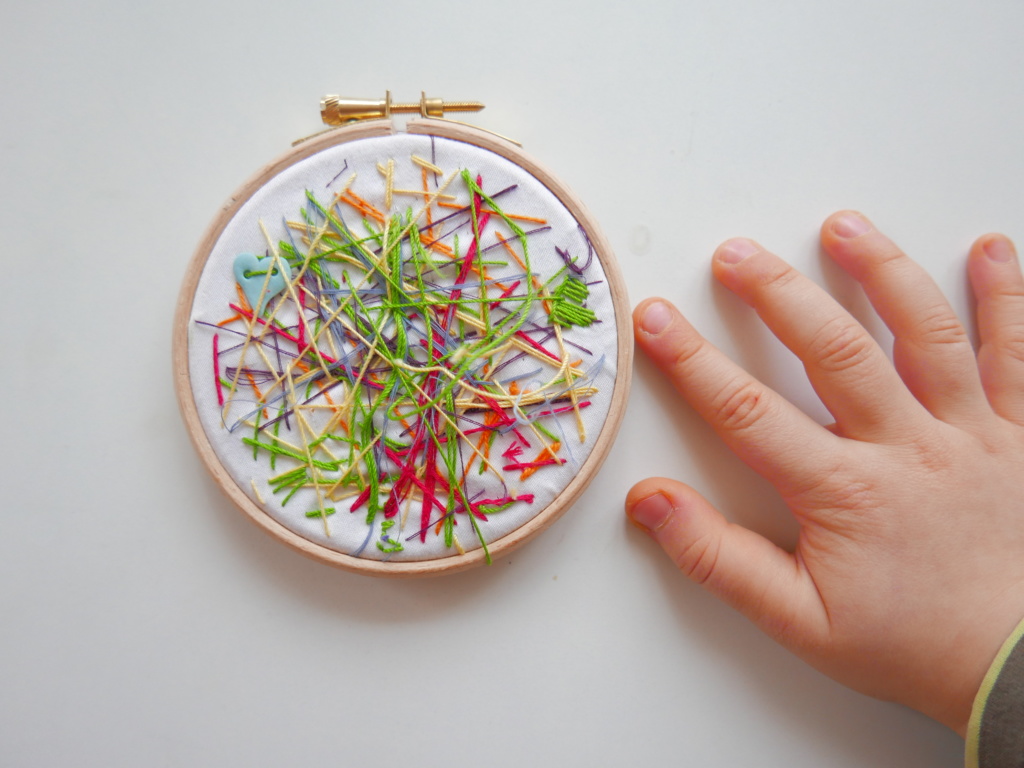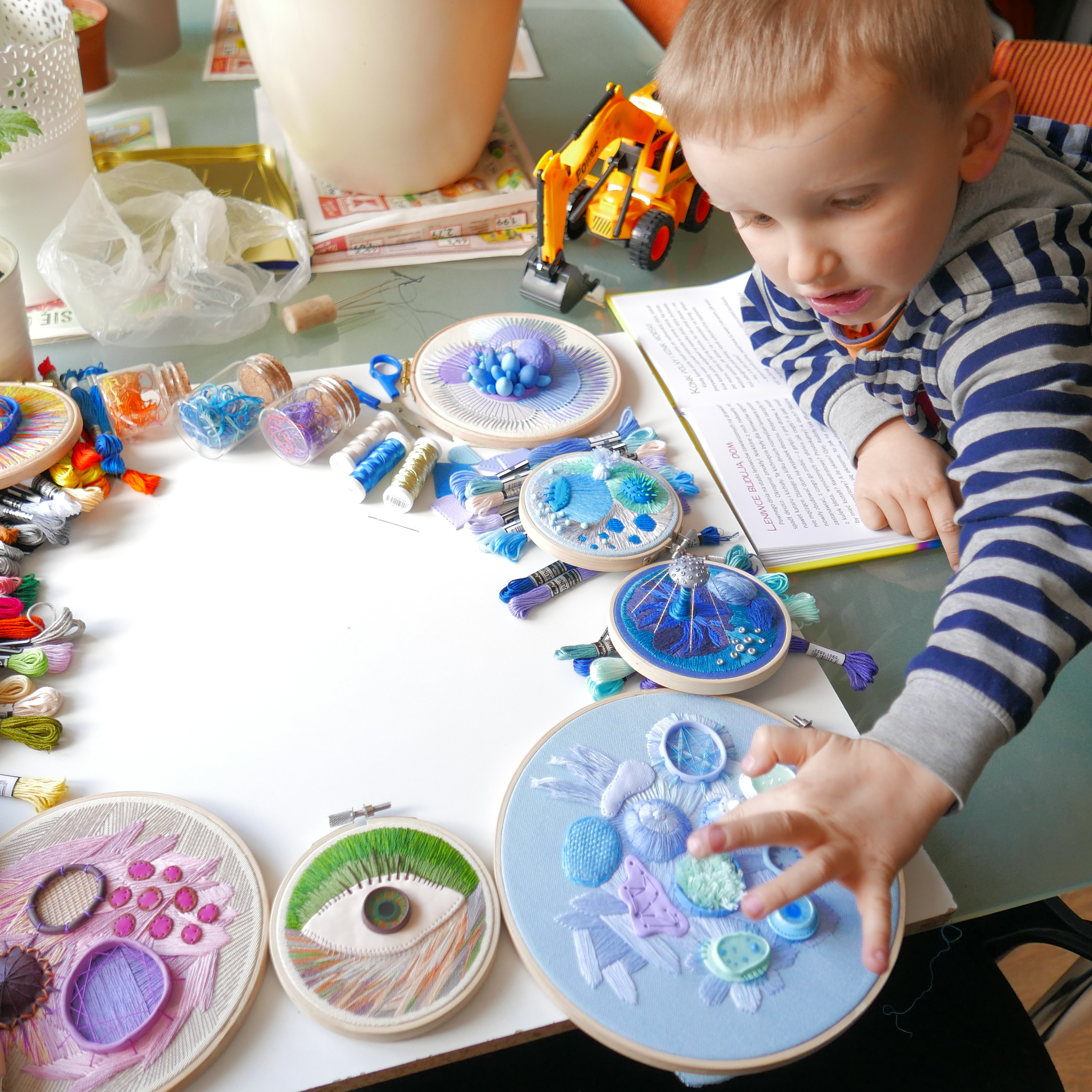Have you ever heard of Montessori method? Maybe you go white and tremble when you see your sweetheart with a scissors or a needle? What will happen if you give it a go – and teach your child embroidery?
This is my story.
My student was 3 and a half when I let him try to stitch. He is very sensitive, skilled and curious. Needles and hoops were all around the place. And he wanted to try so badly. I picked for him some leftover threads, threaded the needle, prepared hoop. And then I sat in awe looking at a completely new level of art – liberated from all rules and worries. I understood I can learn from him a lot.
Every few weeks or even months he asked for a new chance. His next important lesson at 4 revealed enormous progress. Attempts to thread the needle himself… paying attention to not make loops around the hoop frame… following the drawing/pattern…
Rules are limitations, but once you learn about the rules you can consciously unflow them or take advantage and play the game. I’m sure you have heard about the artists that ‘limits’ their own color palettes… More on creative voice you can read here.

Today’s post about the things to remember when introducing your Child to emboridery.
-
Safety first! Always always always supervise your child. Even if the needle is plastic/wooden you have to be around and pay attention. Try to find those safer tools – scissors for children, plastic needle or the metal blunt needle. For toddlers there are nice wooden toys with holes and big wooden needles with rope.
-
Adjust the level of difficulty to your child’s skills. Have in mind how much experience you child has. Some ages are just too early to try it. Do not demand something too difficult – that may cause frustration and we don’t want our kid to get discouraged. Do not force the child to work longer than he/she is interested. Children (especially from 1-6 years) do not need olymipic/master trainings at anything. Being ambitious parent and causing too much pressure early in childhood creates anxious presonality. That is very short story. If you want more on conscious parenting read Shefali Tsabary book.
-
Learn from your child. For me the first experience of watching my son’s embroidery was amazing. I saw embroidery from totaly new perspective. It was fascinating and transformative. Also it is incredible to witness the progress that comes with time. Be inspired and inspire in return.
-
Let it be fun. Especially those early ears learn by play. Do not get angry if he or she mixes up your threads or constantly drags the needle. That’s normal part of the process.
-
Introduce patterns. Finally when the proper time comes (your child is interested in creating shapes, manage to control the needle, can thread the needle) you can introduce patterns – simple drawing to stitch. Like star or circle or simplified animal shape. Lead and supervise as little as possible. Become loving witness and let children be independent. (every unnecessary help is an obstacle on your child’s learning path – Montessori school). Gradually introduce more embroidery techniques and textile art. Or let him just take up whatever he or she loves.
With love,
Justyna
